Specialists - Year 3 & 4 Week 3
Week beginning – 27 April 2020
If you want to see last week's Specialist pages again, click here.
P.E.
30-45 minutes per day
Monday
Warm-up Speedstacks activity ‘Stretch and Stack’ Click here
Laundry basket Skee-Ball
You will need: Empty cereal boxes, laundry baskets, scissors and soft plastic balls(if you don’t have any balls, scrunch up newspaper to make a ball).
Set up:
To create a curved ramp, join two flattened cereal boxes together lengthways with sticky tape and bend into a U shape. You can use sticky tape to keep the shape in place. Place the laundry basket at a distance from where your ramp will be.
To play the game, tilt the ramp at an upwards angle, and roll the ball up the ramp so that they launch into the laundry baskets. It works best if you kneel to roll the ball.
Aim to roll the ball into the basket with the highest points.
Add up your score.
You can play against yourself or another family member.
Keep your ramp in a safe place, as we will play this game again!
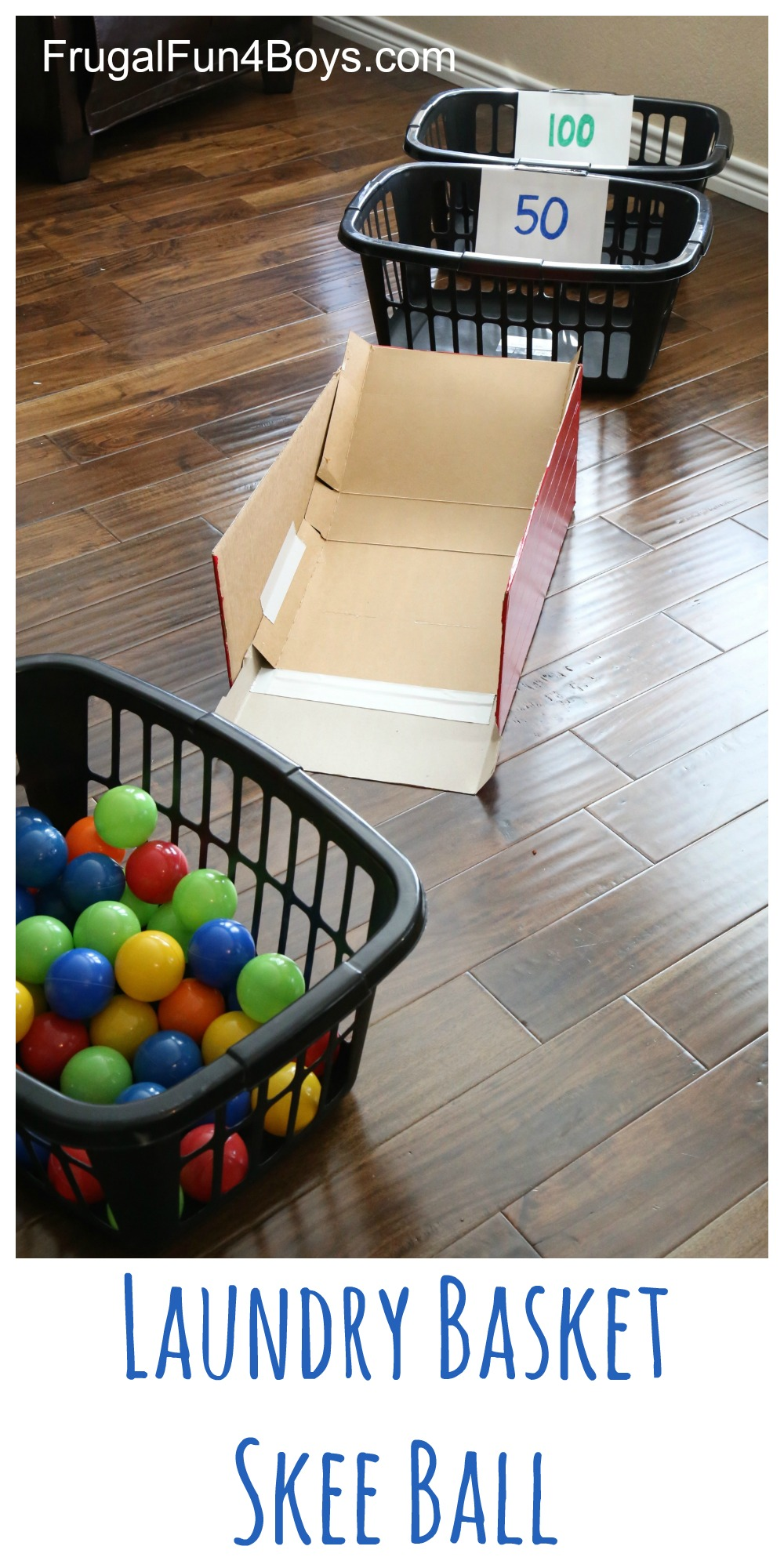
Tuesday
Warm-up
If you have some steps or stairs at home, see if you can go up and down without stopping for 1 minute.
If you don’t have any steps, jog on the spot for 1 minute.
Skipping
Using a skipping rope (if you don’t have one, just pretend you do) practise forward and backwards skipping.
Can you make up your own skipping routine and present it to your family?
Wednesday
Warm-up - Go Noodle activity ‘Turn up the bass’ Click here (Dr Dray loves this warm-up!)
Sportsmanship Activity
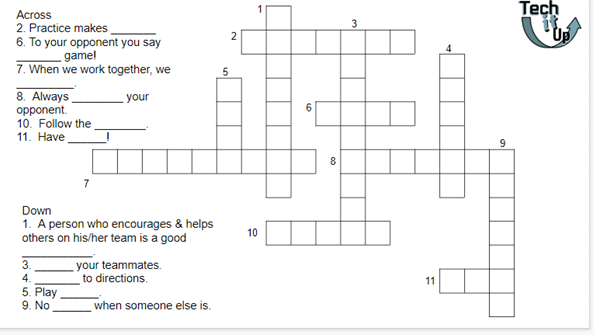
Thursday
Warm-up: Go Noodle activity ‘Fast feet’ Click here
Basketball Skills
Practise basketball shooting if a ring is available. If you don’t have a ring available, can you make one by turning a hat upside down, wedging it between something heavy?
If you don’t have a basketball, you can use a folded up pair of socks.
Choose different positions around the ring to shoot from and try and improve each time.
Try to see how many shots you can get in from a distance in 1 minute
(Mr M can get 20 shots in 1 minute).
Can you beat his score?
Friday
Fitness Monopoly
Click here for Fitness Monopoly
Spanish
30 minutes per week
Word Study: Cognate challenge (Revision)
Near-cognates are words that look NEARLY the same as words in English.
Cognates are words that look EXACTLY the same but are pronounced differently.
There are many words that you already know in Spanish without realising it!
Activity: Determine the meaning of the following near-cognates or cognates.
In your Spanish books (or a piece of paper), write the Spanish word and what you think its equivalent is in English.
active, adorable, atractivo, brillante, complicado, confuse, constant, correcto, enorme, eventualmente, exactamente, excelente, extraordinario, fabuloso, frágil, furioso, gigantesco, imaginario, importante, lógico, magnífico, miniature, misterioso, natural, necesario, nervioso, normal, normalmente, obediente, paciente, perfecto, permanente, secreto, terrible, totalmente, urgent.
Music
60 minutes per week
Get moving to the music!
Join in with the dancing and singing of the song ‘Twist and Shout’.
Maximo has some dance moves to teach you.
See if you can follow along: Click here
Create your own combination of dance moves to this song.
See if you can use some of the ones Maximo shows you, and some of your own dance moves.
Make a poster to use during your music lessons at home.
You will be able to use this to answer questions in some of our next lessons.
Draw some pictures and write an explanation of the following words we use in music.
I have included some information for each word, but I would like you to put some of them into your own words or explanations.
Please keep these posters as I'd like to put some of them up in our classroom.
Year 3:
Beat - the pulse (like our heartbeat) in the music. It stays the same
Rhythm - the sounds and silences on a beat.
- Ta = 1 sound on the beat
- Ti ti = 2 sounds on the beat
- Saa = no sound on the beat
- Tika tika = 4 sounds on the beat
Ostinato - a repeated pattern in music
Bordun - the beat played as a chord. Usually on a xylophone
Tempo - the speed of a song
- Allegro = fast
- Andante = walking pace
- Largo = slow
Dynamics - how loud or soft the music is played
- Forte = loud
- Mezzo Forte = moderately loud
- Mezzo Piano = moderately soft
- Piano = soft
- Crescendo = gradually getting louder
- Decrescendo = gradually getting softer
Melody - the pitch we sing
- La = our high sound (broken love heart)
- Sol = a step below ‘la’ (gate)
- Mi = a skip below ‘sol’ (magic carpet)
Re = a step below ‘mi’ (roof) - Do = our lowest sound/home base (muscle!)
Year 4:
Beat - the pulse (like our heartbeat) in the music. It stays the same
Rhythm - the sounds and silences on a beat
- Ta = 1 sound on the beat
- Ti ti = 2 sounds on the beat
- Saa = no sound on the beat
- Tika tika = 4 sounds on the beat,
- Ti tika = 3 uneven sounds on the beat, the last 2 sounds are faster than the first
Ostinato - a repeated pattern in music
Bordun - the beat played as a chord. Usually on a xylophone
Tempo - the speed of a song
- Allegro = fast
- Andante = walking pace
- Largo = slow
Dynamics - how loud or soft the music is played
- Forte = loud
- Mezzo Forte = moderately loud
- Mezzo Piano = moderately soft
- Piano = soft
- Crescendo = gradually getting louder
- Decrescendo = gradually getting softer
Melody - the sequence of notes that make up a song
- La = our high sound (broken love heart)
- Sol = a step below ‘la’ (gate)
- Mi = a skip below ‘sol’ (magic carpet)
- Re = a step below ‘mi’ (roof)
- Do = our lowest sound/home base (muscle!)
Instrumentation - the instruments we hear in a song
Texture - the number of parts in a piece of music (thick = lots of sounds at once, thin = 1 or few sounds playing the same thing)
Form - the structure or plan of the music. We use letters to show the different parts (e.g. ABA - Ternary form)
Mood - how the music makes you feel
Art
60 minutes per week
Zentangle
Patterns from line can be used to create movement, 3D forms, overlapping shapes, texture and tone.
Start with a clean piece of paper or page in your book and some black pens of different sizes.
You can use ball point pens, fine-liners, sharpies and any type of marker.
Measure and cut a 4cm square from a scrap of paper and trace it a few times onto your page.
Alternatively, you might like to draw organic free hand squares that are about the same size (soft or wobbly lines are referred to as organic line and hard edged or straight lines can be referred to as geometric).
Now fill the squares with patterns. Work from the corner of your square out.
You can follow ideas from the images below, or make up your own designs.
Draw new shapes or lines to fill the page behind the squares.
Doodle Art is a similar idea of growing drawings out from a single point.
You fit shapes and ideas into each other as you go until you fill your page with growing images. You might leave spaces, join or overlap each drawing.
Decide on a theme such as Outer Space, The School Yard as you know it, Under the Sea or Funny Characters.
You can use some skills you learned from zentangle to make your doodle page more interesting.
Many Year 4 students have already begun Zentangle in their books and will know what to do.
You might also like to ask your parents to help you find and print a Zentangle image to copy, or to colour in as a mindfulness activity.
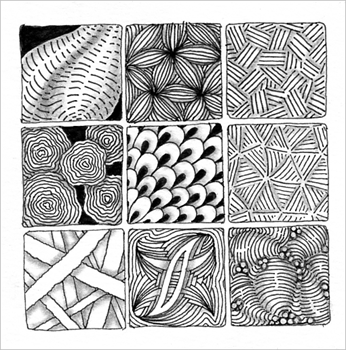
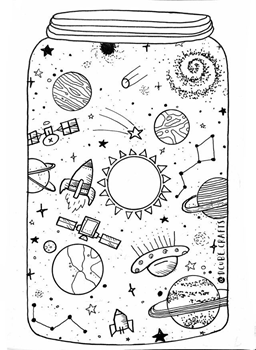
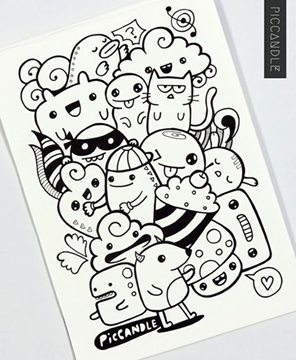
Library
30 minutes per week
Watch the link ‘Sculpting ideas into stories’ by Andy Griffiths Click here
Complete the poster you began last week recommending the book genre of humour.
Your recommendation CAN include these points:
What the genre of the book means
- The names of the main characters from this genre e.g. When reading these books you will be enthralled to meet characters like Captain Underpants who is a superhero in disguise, Andy and Terry who live in a tree house, Greg Hefley who has two brothers who drive him crazy.
- Why you recommend this genre of book
- What is the recommended age group?
- Some of the series of books that fit into this genre
- Who some of the authors and illustrators are. Have they written any other books?
- Have any of the books in this genre been made into movies or received any awards?
- What you would rate this genre out of 10?
Don’t forget to make your poster bright, colourful and appealing.
Be sure to add some ‘catchy’ phrases, e.g: funny, action packed, fun-filled, page turner, eye catching.
Add any other important information such as quotes from the author or books.
Use your imagination to add any other details to your book recommendation to make it stand out.
Present your finished poster to members of your family (this could include any pets you have).
© Copyright Laburnum Primary School
